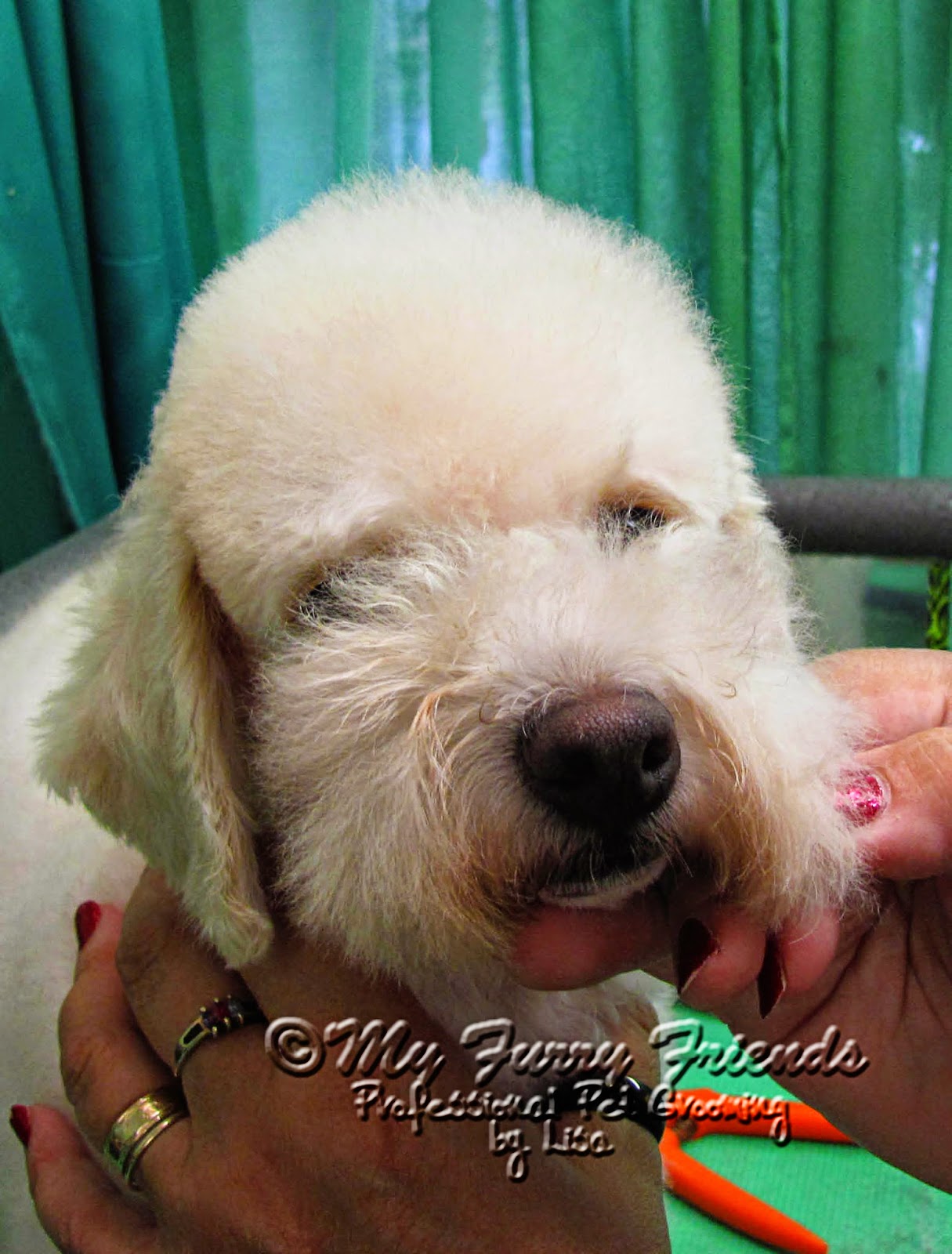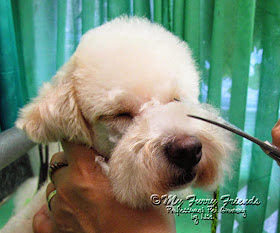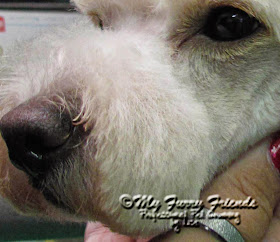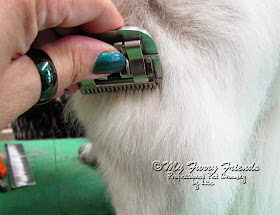I have been asked to show how I did this face on my Toy Poodle.
This is a fairly easy face to do.
It would be a great face to do on dogs whose owners don't want the whole face shaved, but want around the eyes short.
It is also a great cut for dogs whose beards are matted, but you want to save some hair on the face.
Or those dogs that come in with food and mats in their beard and around their mouth.
For my dog here, I used a #15 blade against the grain.
I clipped all of the way up the throat and chin, taking the entire beard off.
Make sure to hold the upper lip hair out of the way while clipping the chin.
Clip from the ear to the corner of the eyes just like you would when shaving a Poodles clean face.
When doing this type of face on other breeds, I have also used a #5F against the grain, or a #7F with or against the grain.
It all depends on the type of coat and how thick of thin the coat on the face is.
I shave out under and between the eyes, going about a quarter of the way down the muzzle.
How far I clip down the muzzle depends on how full I want to leave the mustache and how long the muzzle is.
I stopped shaving at the corner of the mouth.
All washed, blow dried and ready to scissor.
My goal is to scissor the mustache to give it a dome look on top of the nose.
I start by combing all of the hair on the muzzle up.
You want the hair to be either standing up or sticking out sideways.
It will depend on the type of hair as to how much it will stand up.
As you slowly shorten the hair to shape, the hair may stand up better for you to shape it.
I like to start scissoring at the back of the mustache, to scissor the hair away from the eyes and shape the line from the top of the muzzle to the corner of the lip.
This is the type of line I will be scissoring.
Next, I scissor the top and sides of the mustache, going for a round shape.
I scissor a little hair at a time, every once in a while combing the hair up again and then scissoring a little more to shape.
I like to think of my scissoring as sculpting.
Scissoring a little at a time helps you to shape what you are scissoring.
Sometimes we have a vision in our heads about what we think something should look like, and we take that first cut of hair that we think needs to come off only to find that we have cut too much.
That is why I like to scissor small amounts of hair at a time, taking more off as I need to.
Does that make any sense?
I hope so. :)
Now I scissor the bottom of the mustache.
How short you take it is up to the groomer.
On my guy, I take it up to just below the lip line.
On other dogs, and dogs with messy mouths, I have taken the mustache up very tight to the lip line.
Next, I comb all of the hair forward towards the nose.
Then I scissor and shape all of the hair in front of the nose.
I shape all of the way around the front of the mouth and the top of the nose.
I like to round off the front of the mustache just like the back of it.
This is what it looks like from the side.
This is what it looks like straight on.
(This picture is from my guys last grooming, because I forgot to take a front picture of him from the grooming session pictured above. :/ )
Hope this helped. :)































